J.Q. Dickinson Salt-Works
Introduction
Author-Uploaded Audio
Narration from Nancy Bruns, CEO and co-founder of J.Q. Dickinson Salt-Works
Text-to-speech Audio
Images
Dickinson Salt Works as Seen from the Opposite Bank of the Kanawha River, ca. 1910
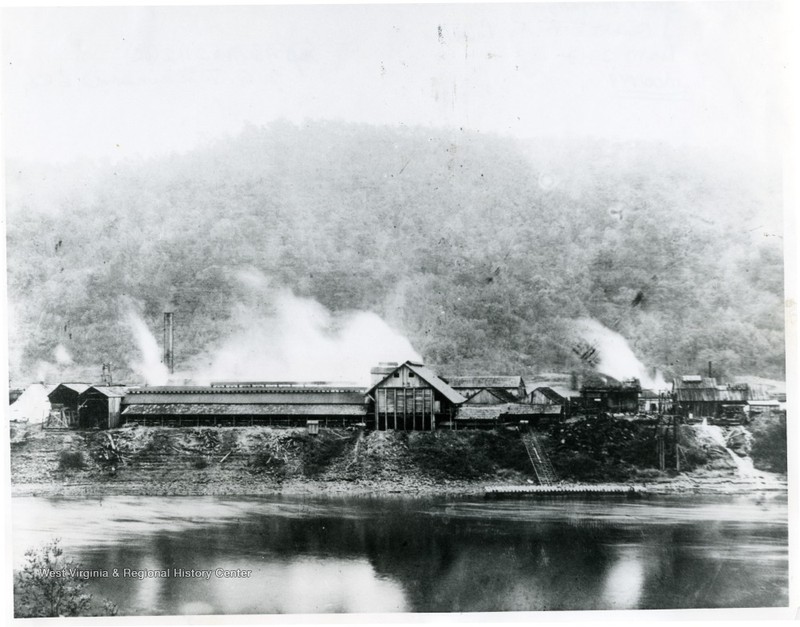
Aerial view of Dickinson Salt Works
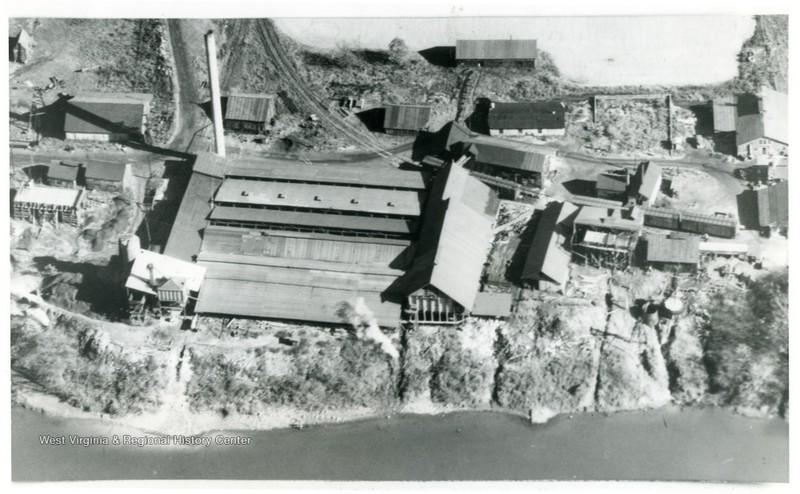
Genuine Kanawha Salt Bags
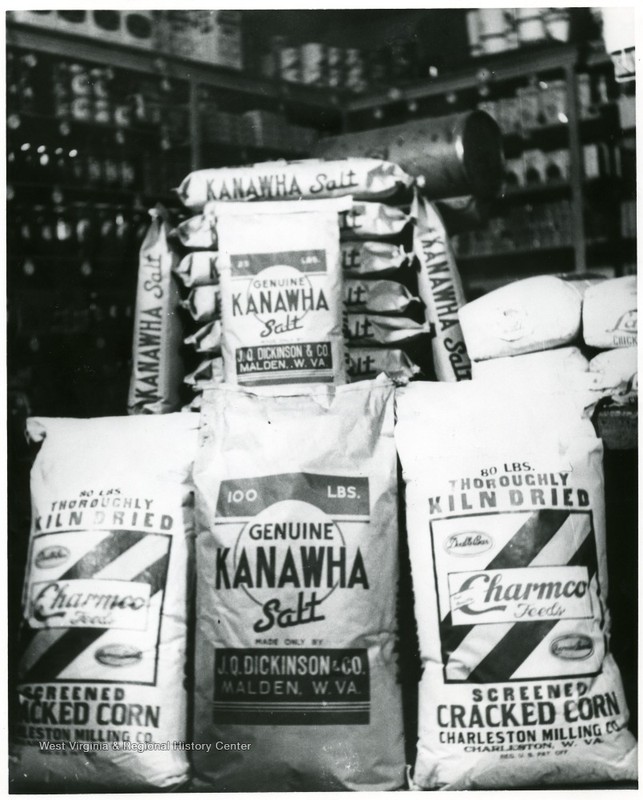
Salt works evaporating sheds
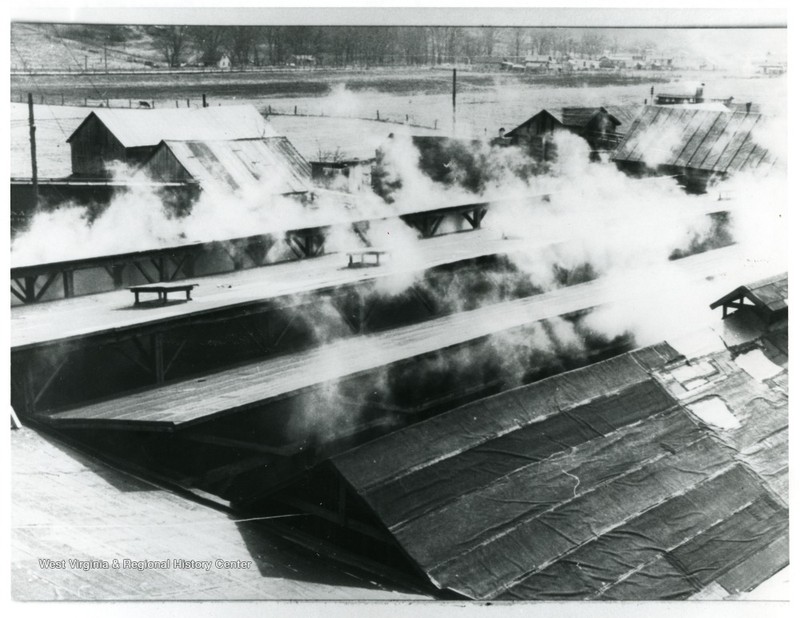
Historical photo of J.Q. Dickinson & Co.
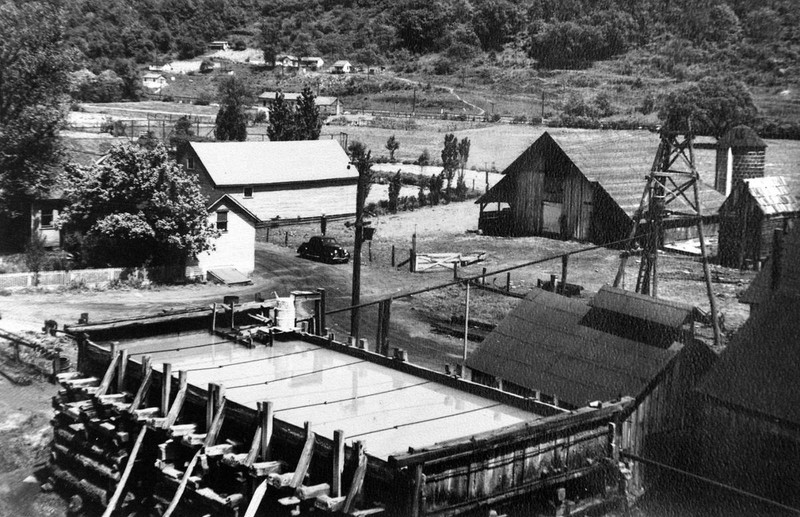
Grainer at Salt Works
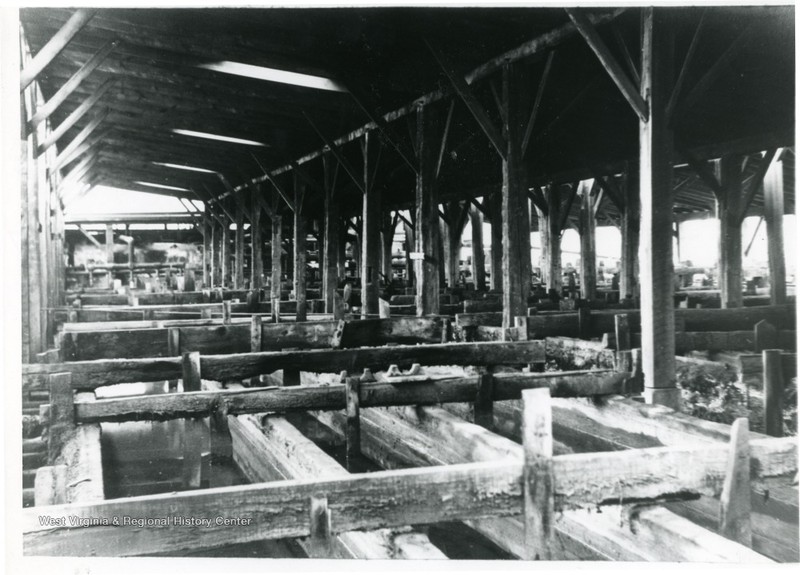
Barn and Salt Dryer at Dickinson Salt Works
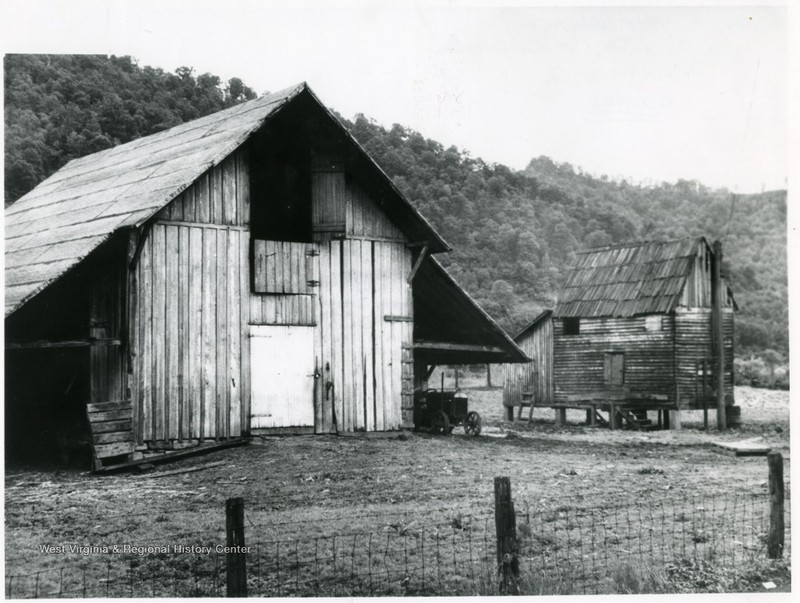
Blacksmith Shop at Dickinson Salt Works
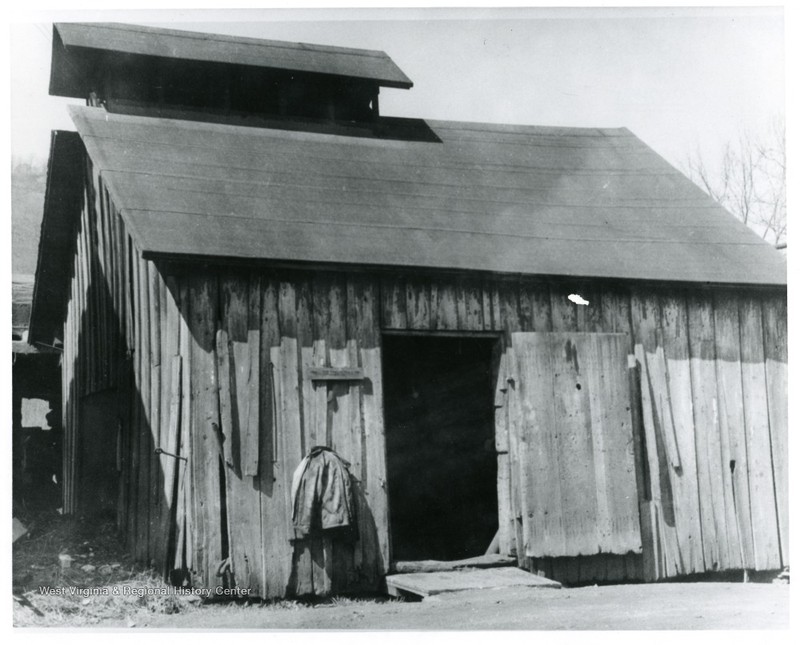
Historical photo of a salt well at J.Q. Dickinson & Co.
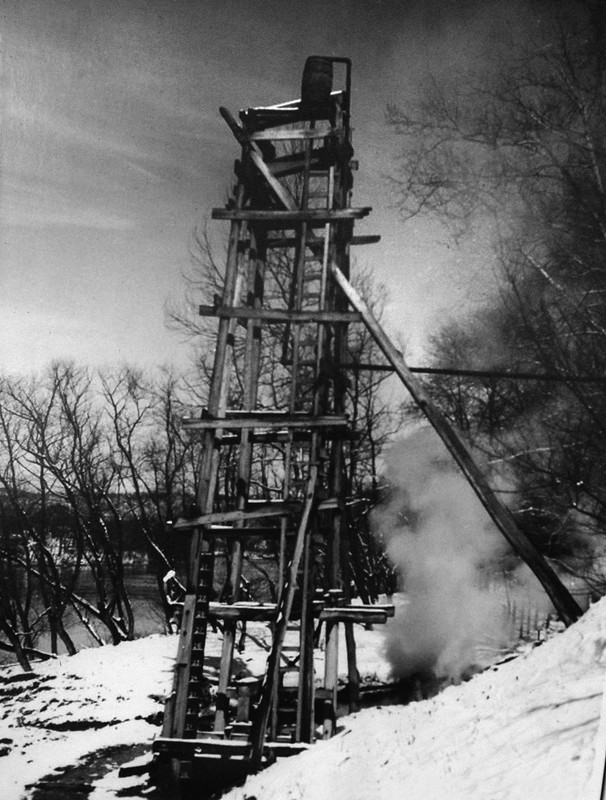
Dust-Lay advertisement for J.Q. Dickinson and Co.
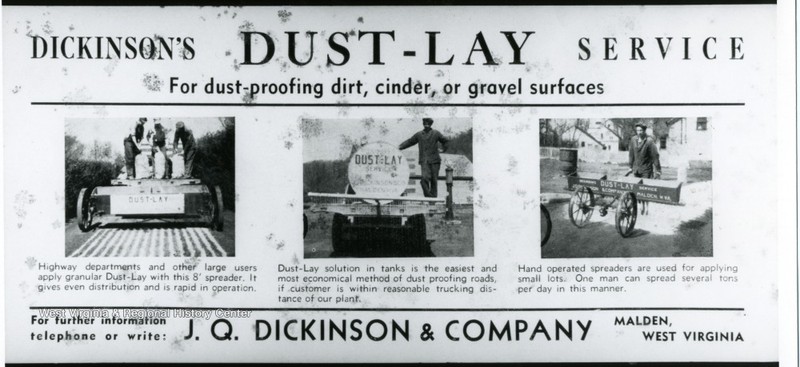
The ruins of what had once been a major salt-producing factory, on the site of the current J.Q. Dickinson works
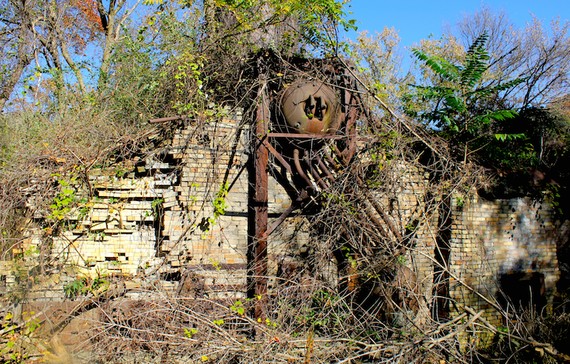
Nancy Bruns and Lewis Payne
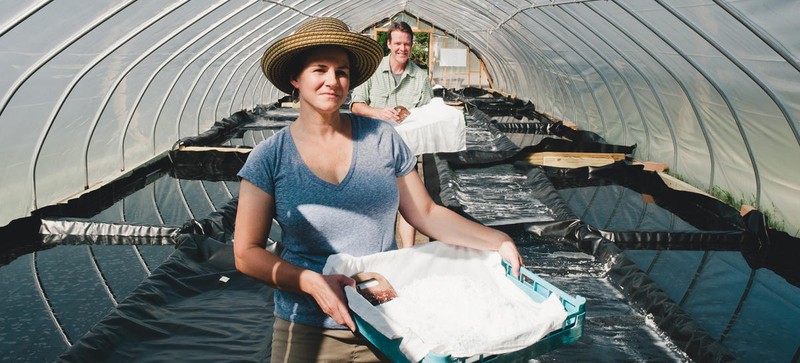
Nancy Bruns and Lewis Payne
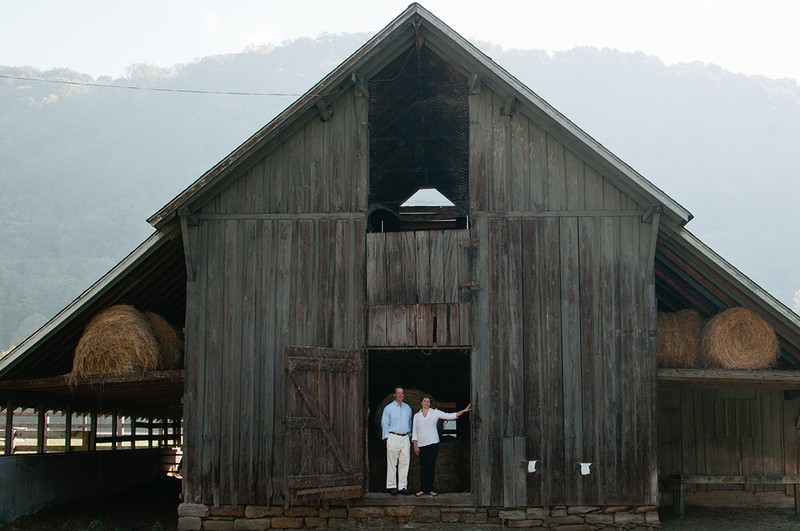
Evaporation rooms in J.Q. Dickinson artisan-salt works

Evaporation rooms in J.Q. Dickinson artisan-salt works

Raking the salt crystals with a birch rake
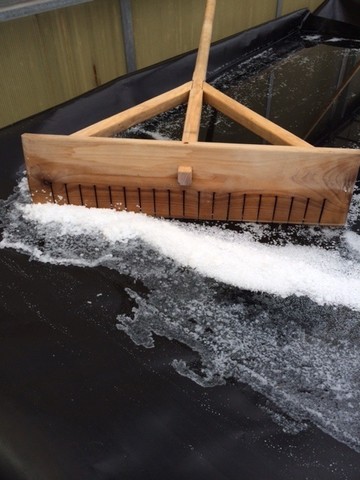
Salt is hung to drain and dry in cotton bags
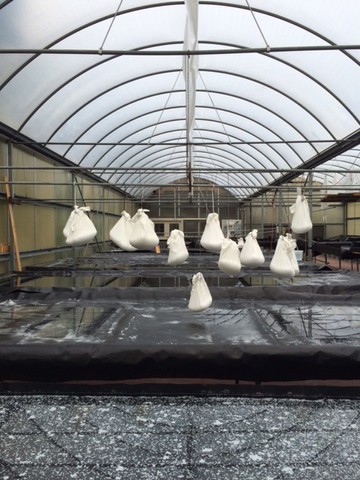
Jar of J.Q. Dickinson Salt

Backstory and Context
Text-to-speech Audio
Centuries before the first settlers of European, Asian, and African descent arrived in the Kanawha Valley, animals were drawn to salt springs near the present-day town of Malden. Native Americans also knew of this Great Buffalo Lick, as they followed animal trails to the springs and boiled their water to obtain salt. During the late 1700s, as white settlers pushed further westward, captives taken in Native American raids were occasionally brought to the Kanawha Valley salt springs. According to local histories, Mary Draper Ingles was forced to make salt from the brine of a Kanawha Valley salt lick after she was captured by Shawnee Indians in 1755. As settlement of the valley rapidly progressed in the following decades, it was not long before the area’s salt industry was born. Elisha Brooks erected the valley’s first salt furnace at the mouth of Campbell's Creek in 1797. Brooks collected brine and boiled it to evaporate the water, leaving behind salt crystals. He soon produced up to 150 bushels of salt each day, which he sold to settlers who used salt to cure butter and meats. After the Ruffner brothers successfully drilled for brine and set up the first commercial furnaces in 1808, salt production began attracting other entrepreneurs in earnest.
The salt industry’s potential soon attracted the attention of brothers-in-law William Dickinson and Joel Shrewsbury. In 1804, the two had entered a business partnership in Bedford and Franklin Counties, Virginia, where they dealt primarily in tobacco commerce. The partners became involved in the salt business in 1813, when they purchased over 300 acres of land along the Kanawha River and made a deal to operate the salt furnace of two of Shrewsbury’s brothers. Along with the obvious appeal of the rapidly-growing salt industry, the partners were also drawn to the agricultural potential of the Kanawha Valley soils. Dickinson & Shrewsbury Co. completed its first salt well in 1817, using a hollow tree trunk as the piping. In the years that followed, Dickinson & Shrewsbury went on to drill hundreds of brine wells and acquire the land, coal, and timber necessary to fuel its facilities.
By the 1830s, the Kanawha Salines had become the largest salt-making area in the United States, with Dickinson & Shrewsbury among the “Salt Kings of Kanawha.” The area retained its primacy for decades and even achieved international recognition in 1851, when “The Great Kanawha Salt” was declared “The Best Salt in The World” at the World’s Fair in London. Technological change accompanied the rapid growth of the Kanawha salt industry, as saltmakers adapted coal as fuel, invented well-drilling tools, developed steam engines for pumping brine, and pioneered the Kanawha grainer evaporative system. Although the initial profitability of the salt industry waned as new competitors appeared along the Kanawha, Dickinson & Shrewsbury responded by diversifying business and maintaining an involvement in agriculture and commerce. The partners were equally strategic within the salt business, as they shifted their focus to Tennessee and quickly came to dominate the Nashville salt market.
Before the Civil War, salt production in the Kanawha Valley was a relatively simple but labor-intensive process that depended largely on slave labor. Most slaves were leased out from plantations in Kentucky and eastern Virginia, and worked on a temporary basis in the saltworks. Due to the shifting labor population and an absence of written records, the exact number of slaves at the Kanawha salt works remains unclear, though it is estimated that up to 1,500 slaves manned the works during its heyday. As the largest single salt manufacturer, Dickinson & Shrewsbury was likely the largest user of slave labor in the area, employing slaves at the works and in the mines that supplied the coal for its furnaces. Dickinson & Shrewsbury had 232 slaves under its control in 1850, though the number had fallen to 130 by 1856.
During the 1850s, the Kanawha salt field reached its peak and began to decline, as the meat packing industry shifted west, the railroad system expanded, and salt reserves were discovered elsewhere in the country. In 1856, the Dickinson & Shrewsbury partnership was dissolved, shortly before its two founding members passed away. The Dickinson family remained in the salt industry as J.Q. Dickinson Salt-Works, though the Civil War soon interrupted its ability to conduct business as usual. In 1867, members of the family returned from the war and founded the Kanawha Valley Bank, which went on to become the state’s largest bank. The bank eventually became One Valley Bancorp and was acquired by the bank holding company BB&T in 2000. The Dickinsons were wise to diversify their interests, as the Kanawha salt industry continued to decline over time. Eventually, Dickinson Salt Works was the only remaining salt manufacturer in the area, before it too closed in 1945. By that time, Kanawha Valley salt making had been replaced by the chemical industry, whose facilities harvested and processed the chemicals and natural gas which had once been discarded as waste by salt drillers.
In 2013, J.Q. Dickinson Salt-Works was revived by siblings Nancy Bruns and Lewis Payne, seventh-generation Dickinsons. With the help of a geologist, Bruns and Payne drilled a new pump on the old Dickinson family farm in order to recapture salt from the ancient Iapetus Sea three hundred feet below the ground. Whereas the family’s ancestors had used wood and coal to stoke fires and boil the brine to acquire salt, the siblings have taken a more environmentally friendly approach to produce small-batch finishing salt. They built solar-powered evaporation houses, called sun-houses, in which the salt crystals take about three weeks to separate from the brine. When enough salt has formed and the crystals are the right size, it is harvested with a wooden rake and hung to drain in cotton bags. Once dry, the salt is cleaned, sorted, and packaged. Today, the salt company has become a proud fixture of the area, just as it was two hundred years ago. While it no longer ships hundreds of pounds of salt up the river to meat processing facilities in Ohio, J.Q. Dickinson Salt-Works is now served in restaurants throughout West Virginia and across the country, and it has expanded to sell products like seasoned salt mixes and salt soaps in collaboration with other local producers.
Sources
Fallows, James. Artisanal Salt From an Ancient Sea, The Atlantic. December 5th 2014. Accessed February 5th 2020. https://www.theatlantic.com/business/archive/2014/12/artisanal-salt-from-an-ancient-sea/383460/.
Gardner, Jennifer. Salt of the earth: Mineral’s wells run deep in Kanawha Valley, Charleston Gazette-Mail. September 16th 2017. Accessed February 5th 2020. https://www.wvgazettemail.com/life/salt-of-the-earth-mineral-s-wells-run-deep-in/article_ce694f2f-ee15-5520-bc50-2d467ea06c52.html.
History of West Virginia Mineral Industries - Salt, West Virginia Geological and Economic Survey. July 19th 2004. Accessed February 5th 2020. http://www.wvgs.wvnet.edu/www/geology/geoldvsa.htm.
Our Story, J.Q. Dickinson Salt-Works. Accessed February 5th 2020. https://www.jqdsalt.com/our-story/.
Sibray, David. J.Q. Dickinson Salt Works, Greenbrier Valley Quarterly. February 5th 2017. Accessed February 5th 2020. https://www.gvquarterly.com/blog/2017/2/5/jq-dickenson-salt-works.
Stealey III, John Edmund. Salt Industry, The West Virginia Encyclopedia. October 26th 2010. Accessed February 5th 2020. https://www.wvencyclopedia.org/articles/168.
Stealey III, John Edmund. Virginia's Mercantile-Manufacturing Frontier: Dickinson & Shrewsbury and the Great Kanawha Salt Industry. The Virginia Magazine of History and Biography, vol. 101, no. 4509 - 534. Published October 1993.
https://wvhistoryonview.org/catalog/001449
https://wvhistoryonview.org/catalog/001465
https://wvhistoryonview.org/catalog/001421
https://wvhistoryonview.org/catalog/001482
https://www.wvgazettemail.com/life/salt-of-the-earth-mineral-s-wells-run-deep-in/article_ce694f2f-ee15-5520-bc50-2d467ea06c52.html
https://wvhistoryonview.org/catalog/001466
https://wvhistoryonview.org/catalog/001462
https://wvhistoryonview.org/catalog/001435
https://www.wvgazettemail.com/life/salt-of-the-earth-mineral-s-wells-run-deep-in/article_ce694f2f-ee15-5520-bc50-2d467ea06c52.html
https://wvhistoryonview.org/catalog/001455
https://www.theatlantic.com/business/archive/2014/12/artisanal-salt-from-an-ancient-sea/383460/
https://www.wvpublic.org/post/historic-salt-company-alive-again-malden#stream/0
https://www.jqdsalt.com/our-story/
https://www.jqdsalt.com/method-madness/
https://www.theatlantic.com/business/archive/2014/12/another-look-at-salt-harvesting-in-west-virginia/383485/
https://www.jqdsalt.com/method-madness/
https://www.jqdsalt.com/method-madness/
https://www.jqdsalt.com/method-madness/
